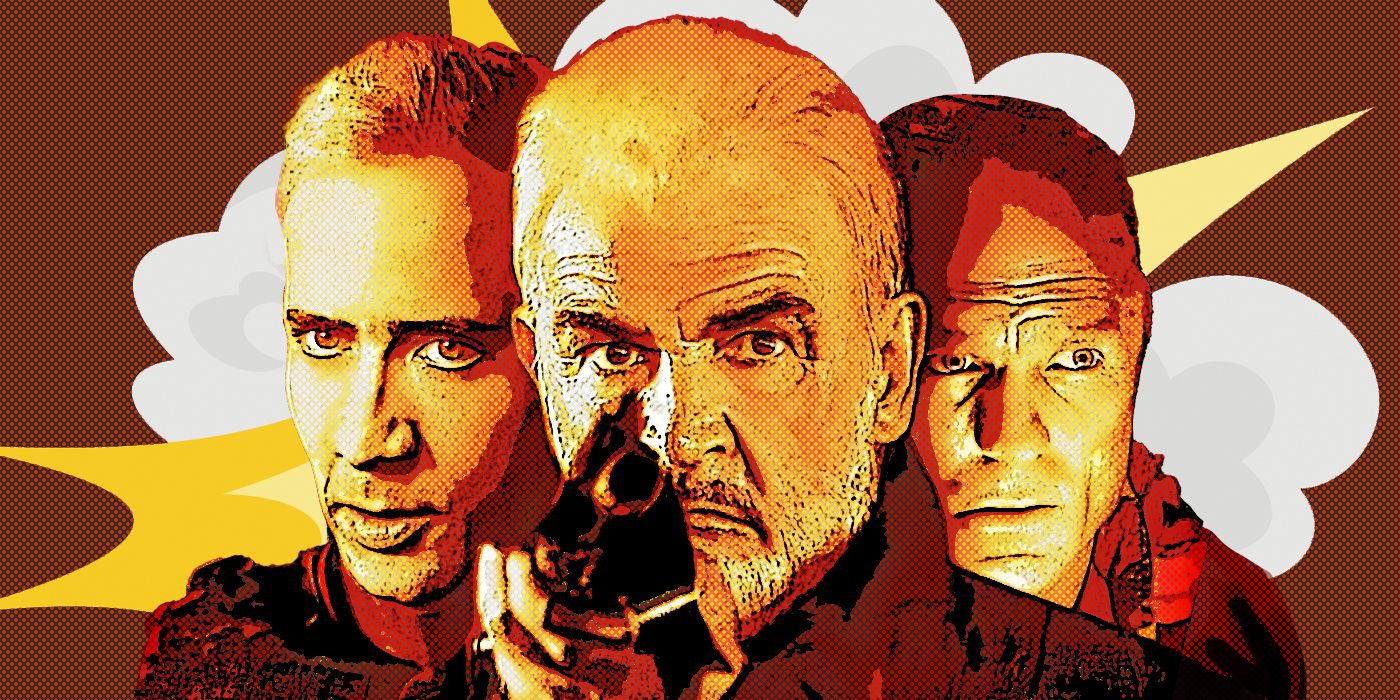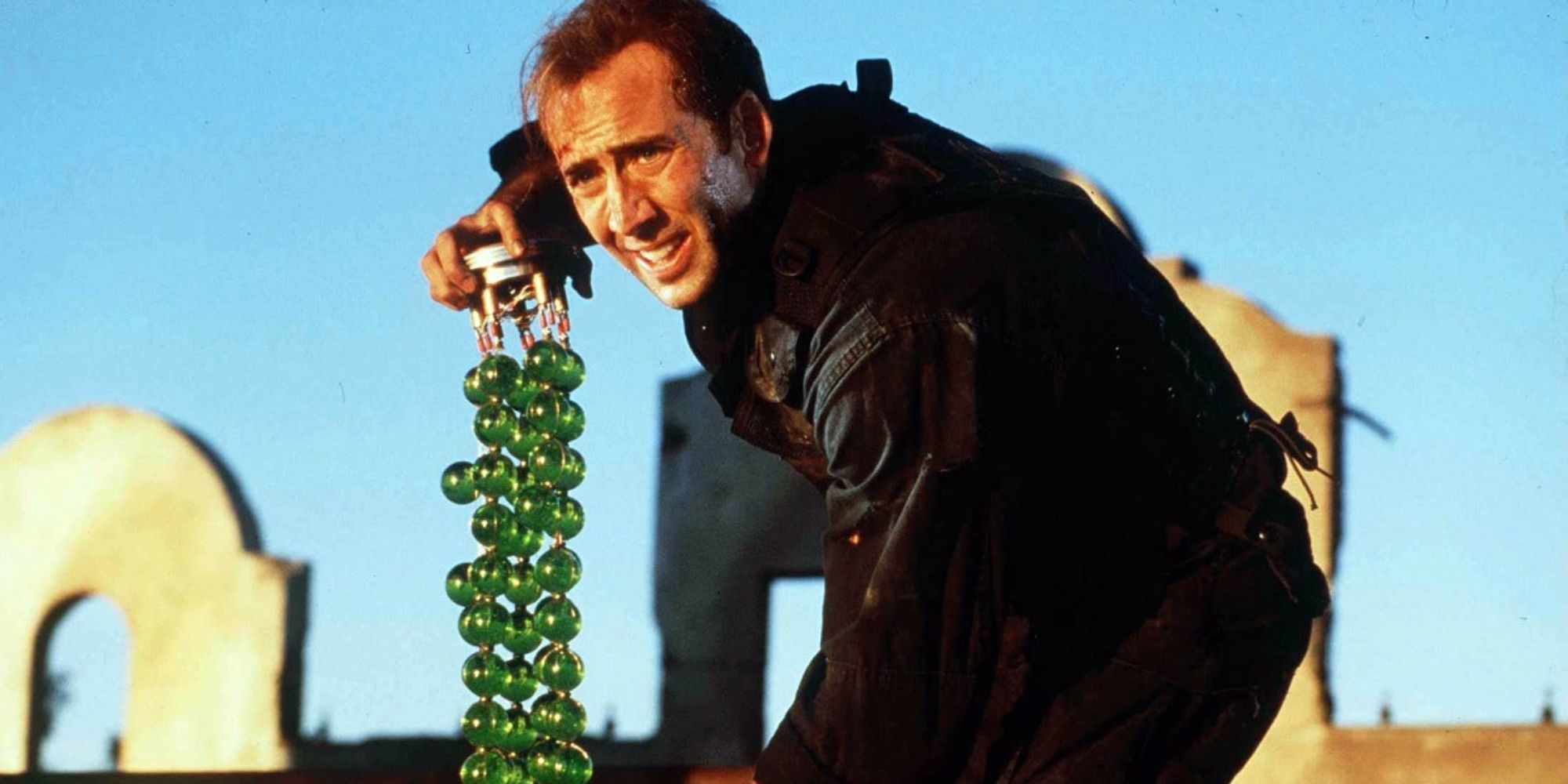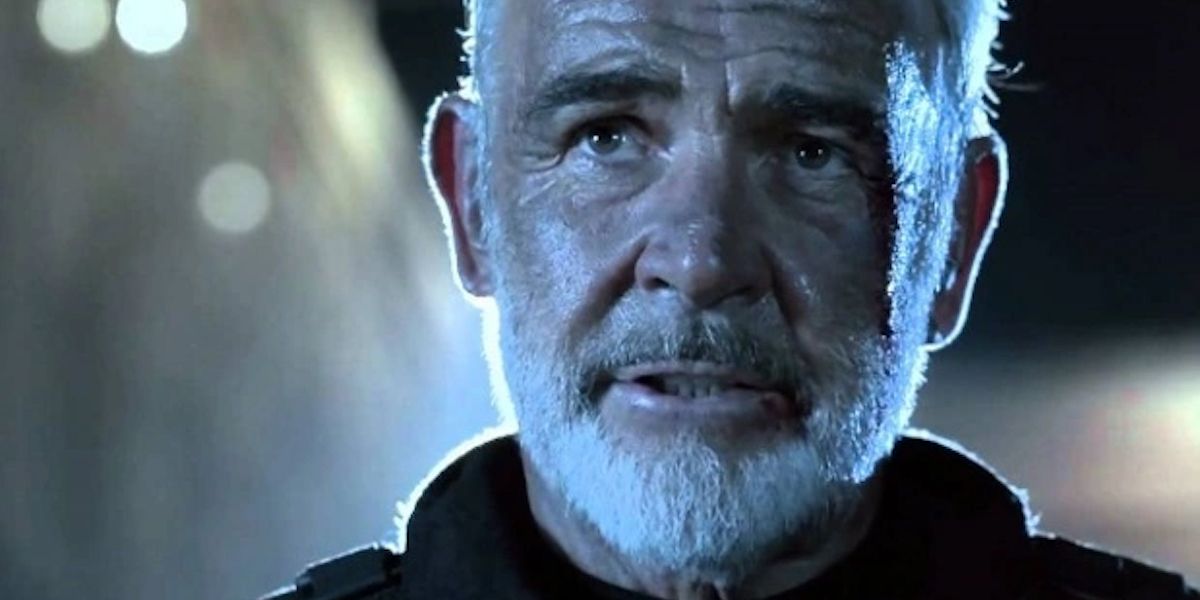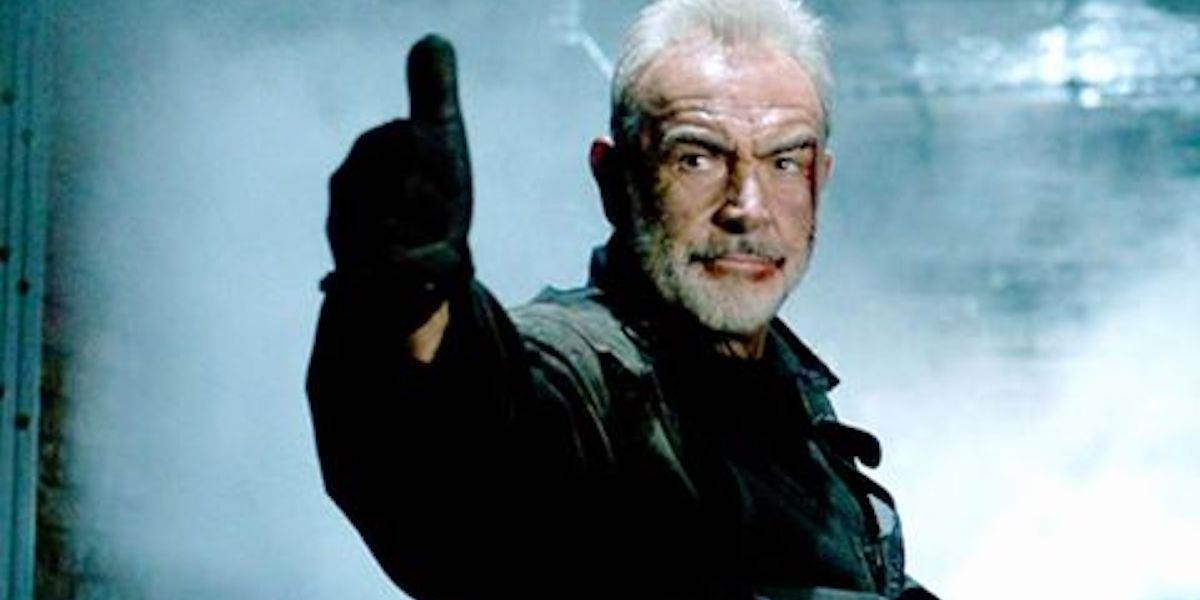In terms of quality of work, Michael Bay has always been at the forefront of scathing criticism. Critics and even audiences have caught up to his over-reliance on explosions, over-the-top action, and downright sub-par filmmaking whose objective is to rake in the profits rather than to present something artistic and "auteur-cinema" worthy. That isn't necessarily a bad thing if that's his aim, but in a medium that has far surpassed the debates on whether it could be considered art, Bay has been, for some, the solitary example of what one shouldn't represent in filmmaking. However, there is a case to be made that even the most profit-driven filmmaker is more than capable of making something more than just a plain blockbuster, and his adrenaline-pumping, Alcatraz-based action flick The Rock exemplifies that "Bayhem" can be artistic if delivered on a calculated scale.
What Is The Rock About?
Rising head and shoulders above his body of work, The Rock tells the story of Brigadier General Frank Hummel (Ed Harris), a military official who is immensely frustrated with the government's failure to properly award his lost mens' families with the proper benefits. In a desperate attempt to make them listen, Hummel and his forces raid a top secret military base containing a deadly biochemical weapon and holds several tourists hostage at Alcatraz, threatening to use the weapon if they do not listen to his demands. To mitigate this pending disaster, the USA Department of Defense and the FBI turn to chemical weapons expert Dr. Stanley Goodspeed (Nicolas Cage). Understanding that they might be walking into a death trap, they reluctantly tap the services of a dangerous former inmate who is the only known individual to escape Alcatraz prison and live to tell the tale, Captain John Patrick Mason (Sean Connery). In exchange for pardon from his crimes (which was eventually revealed to be merely a bluff) and a chance for reconciliation with his estranged daughter, Mason agrees to lead them inside the underground tunnels, the very path he used to escape the impenetrable fortress. Once inside, the officers slowly fall into the hands of General Hummel's men, and here is where Bay's purposeful brushstrokes come to play.
Calculated Strokes of Bayhem
The ham-fisted action and the plethora of earth-shaking explosions have become so synonymous with Bay, that this signature style of his has evolved into a filmic buzzword: Bayhem. Bayhem, obviously a portmanteau of the word mayhem, refers to the director's chaotic and frenetic style of filmmaking. This would refer to the use of dizzying cuts, arc shots, and an abundance of feverish camera movements in order to make something seem epic and grand in scale, even when there is no need to. In terms of the action, this is characterized by an insane amount of things going up in flames, wire-to-wire action sequences, and superfluous doses of everything with no particular purpose other than just plain spectacle. Often, this would be used to mask the lacking plot points and the fragmented narratives of his work. In The Rock however, Bayhem is calculated, motivated, and deliberate in nature. It is paradoxical, but it is what makes the picture so special. Bay's filmmaking in general is like a wild beast, violently shaking and rocking its cage, but when tamed and focused, turns into a precise and disciplined creature, which still possesses a ferocious nature. The Rock is the result of a filmmaker in perfect harmony of his elements, while still packing a punch that could knock the wind right out of the viewers.
This is epitomized in the emotional and oddly patriotic shower room scene. As the special forces maneuver their way into the Alcatraz tunnels, they soon break through into the prison showers which triggers a motion sensor, alerting General Hummel. As soon as they come out, they are immediately surrounded by his group of mercenaries, covering them from an elevated position. In the ensuing standoff, Hummel and the special forces team leader Commander Anderson (Michael Biehn) exchange pleasantries. In perhaps the most moving piece of dialogue in the picture, Anderson pleads with the disenfranchised general to listen to reason, saying, "Sir, we all know why you're out here. God knows I agree with you. But like you, I swore to defend this country against all enemies, foreign, sir, and domestic."
But when a rock is accidentally dropped, a bloody shootout ensues and the bottled up chaos reaches its apex. Like a Jackson Pollock painting, the violence and action is all over the place, but at the same time, everything is where it needs to be. The camera is a watchful eye at the right place at the right time. It lulls the spectator straight into a sense of being in the moment, every frame capturing the essential in the sanguinary confrontation. The audience sees in full detail the painful moment Commander Anderson falls, and it makes them feel for the fallen soldiers. With perfectly timed close-ups on the resentful Hummel, the shocked FBI agents at home base, and the desparate survivors Goodspeed and Mason, he encapsulates this moment through plain human feelings. In a striking play out of left field, Bay humanizes the violence, and in an action film that's supposed to be an exhibition of its genre conventions, carefully extracts the emotions right out of the viewer's hearts.
Forcing the Pace
In relation to its calculated Bayhem, The Rock can also be construed as a tale of two paces, each of which is forced by the directorial hand of Bay. The first half of the flick is played out in breakneck speed, particularly the action. The sequence where Mason escapes from the hotel suite while he is being treated to a day of self-care is a typical Michael Bay chase sequence. There are countless cuts and the camera struggles to be in a single solitary place. As Goodspeed runs after Mason first in a Ferrari, then in a motorcycle, bedlam erupts and the mise-en-scene is filled with set pieces blown to smithereens. Almost a whole quarter of the city is totalled, and miraculously, no lives are assumed to have been lost. To get confused in the ruckus is the whole point, and Bay uses this as a mere entry point to a more deliberately-paced second-half. As the film progresses, it becomes more measured, and the mayhem comes in bursts. It is a brilliant move as it draws the audience to reflect on all the destruction they have witnessed, only to draw them back to an almost fireworks-like display of chaos in the climax. Bay takes up the role of an orchestra conductor, playing the audience like a fiddle, making them cling on to every movement of his baton and in an obligatory manner asks them to be at his own tempo.
Is Capt. John Mason Actually James Bond?
Aside from this, perhaps the most interesting bit about The Rock is the theory that Captain John Mason is actually 007 himself, James Bond. What's surprising is this theory doesn't just hold ground. It is entirely possible that Mason is the world's most famous Secret Service agent, once you examine the circumstances (for a deeper look, Pentex Productions has done a marvelous dissection of this theory).
For instance, Mason was an English agent, and by his own words, trained by British intelligence. He is imprisoned for stealing a microfilm containing all of the most sensitive secrets of the United States government, a job which seems to only befall those of the most confidential individuals. The timeline adds up as well, and in the context of The Rock, he possesses all the pertinent characteristics synonymous with Bond; ability to escape, intellect, and most importantly, his charisma. It does help as well that Mason is played by the ever-suave Connery, the actor most associated with James Bond. Bay understands this, and uses both Connery and Bond's cultural capital to strike a familiar conversation with the audience. All directors are arguably intertextual, and Bay becomes a utilitarian by driving the mythos of the actor and the character to make us relate with the undoubted star of the show. By picturing Mason as Bond, the audience is obligated to buy in to this out of this world plot, since the Bond movies picture them as everyday occurrences. The fact that Mason eludes capture in the end, never to be seen by the authorities only adds to the lore. Both financially and artistically, this is a great move which results in a more layered film that moves beyond just a run-of-the-mill blockbuster. It is a continuation of a legend that has been passed on from generation to generation, and makes for a perfect after-watch discussion.
In essence, The Rock displays an oft-dismissed filmmaker at the top of his game and so in tune with his elements. It results in a picture that even the most snobbish of cinephiles might not be ashamed of viewing, worthy of its inclusion in the mecca of arthouse films, The Criterion Collection. It is the quintessential case of controlled excess, a sweet spot, a taming of the reckless and Bayhem-filled beast that most viewers yearn to see Bay reach once more.




